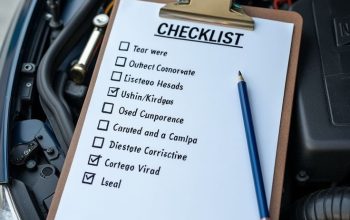Fire Engine Maintenance: Ensuring Readiness and Reliability
Fire engines are the backbone of emergency firefighting operations. They must always be in peak working condition to ensure the safety of both firefighters and the communities they serve. Regular maintenance not only extends the lifespan of these crucial vehicles but also enhances their efficiency in emergency situations. This article explores the key aspects of fire engine maintenance, including routine inspections, preventive care, and best practices for keeping these specialized vehicles operational.
Importance of Fire Engine Maintenance
Fire engines are more than just trucks; they are complex machines equipped with water pumps, hoses, ladders, and emergency response tools. A malfunctioning fire engine can delay rescue efforts and put lives at risk. Regular maintenance ensures:
- Operational Readiness: Ensuring that the fire engine is always ready for immediate deployment.
- Safety Compliance: Adhering to regulatory and safety standards to protect firefighters and civilians.
- Prolonged Lifespan: Preventing wear and tear from escalating into costly repairs or replacements.
- Efficiency: Reducing response time and ensuring optimal performance during emergencies.
Daily Inspections
Routine checks should be performed at the start of each shift to identify potential issues before they become major problems. Daily inspections typically include:
-
Visual Checks
- Look for leaks, loose parts, or any signs of damage.
- Inspect tires for proper inflation and tread wear.
- Ensure all lights and sirens are functional.
-
Fluids and Lubrication
- Check engine oil, transmission fluid, coolant, brake fluid, and hydraulic fluid levels.
- Inspect fuel levels and refill if necessary.
- Ensure proper lubrication of moving parts.
-
Pump and Water System Check
- Test the water pump to ensure proper suction and pressure.
- Inspect hoses for cracks, leaks, or obstructions.
- Verify the functionality of water tanks and valves.
-
Electrical and Communication Systems
- Ensure the radio and communication devices are operational.
- Check battery levels and connections.
- Test emergency lights, sirens, and onboard computers.
Weekly and Monthly Maintenance
In addition to daily inspections, weekly and monthly maintenance tasks help maintain the fire engine’s longevity.
Weekly Maintenance Tasks
- Conduct a more in-depth inspection of the engine and mechanical components.
- Test the braking system for responsiveness.
- Clean air filters and check the ventilation system.
- Inspect the undercarriage for rust, damage, or loose bolts.
- Perform a full pump operation test to ensure water pressure remains consistent.
Monthly Maintenance Tasks
- Perform a complete oil and fluid change if required.
- Rotate tires and check wheel alignment.
- Conduct a battery load test to prevent unexpected failures.
- Examine ladders, winches, and hydraulic rescue tools for wear or damage.
- Ensure all onboard medical and firefighting equipment is fully stocked and operational.
Preventive Maintenance and Annual Servicing
Preventive maintenance is crucial in reducing the risk of unexpected breakdowns. Fire departments should follow a structured servicing schedule to keep their engines in optimal condition. Annual servicing generally includes:
-
Comprehensive Engine Check
- Inspect and replace spark plugs, filters, and belts as needed.
- Test and recalibrate fuel injection systems.
- Check for exhaust system leaks or inefficiencies.
-
Pump System Overhaul
- Conduct a full pressure test and system flush.
- Inspect pump seals and replace worn-out gaskets.
- Lubricate valves and moving parts.
-
Chassis and Structural Inspection
- Look for signs of frame stress or metal fatigue.
- Inspect suspension and shock absorbers.
- Repaint and treat areas with rust or corrosion.
-
Hydraulics and Electrical System Testing
- Evaluate hydraulic lift systems and rescue tools.
- Inspect and replace faulty wiring or fuses.
- Test alternator and generator performance.
Best Practices for Fire Engine Maintenance
To ensure effective maintenance, fire departments should implement best practices such as:
- Keeping Detailed Records: Maintain logs of all maintenance activities, inspections, and repairs for accountability and future reference.
- Training Personnel: Firefighters should be trained to perform basic maintenance and identify potential issues before they escalate.
- Using High-Quality Parts: Always use manufacturer-approved components to maintain the integrity of the vehicle.
- Following Manufacturer Guidelines: Adhere to the recommended service schedules and specifications provided by the fire engine manufacturer.
- Conducting Regular Drills: Simulate emergency scenarios to test vehicle performance under real-world conditions.
Common Fire Engine Maintenance Challenges
Despite routine checks, some challenges can arise in maintaining fire engines:
- Wear and Tear: Continuous use in harsh conditions can cause accelerated wear on critical components.
- Budget Constraints: Fire departments may struggle with funding for high-quality parts and servicing.
- Aging Fleet: Older fire engines require more frequent repairs and may eventually need replacement.
- Environmental Factors: Extreme weather conditions, such as freezing temperatures or high humidity, can affect engine performance.
Conclusion
Fire engine maintenance is a crucial aspect of ensuring public safety and operational readiness. Regular inspections, preventive maintenance, and adherence to best practices can help fire departments keep their vehicles in top condition. By investing in proper maintenance and training, fire stations can reduce downtime, enhance efficiency, and ultimately save lives in emergency situations.




